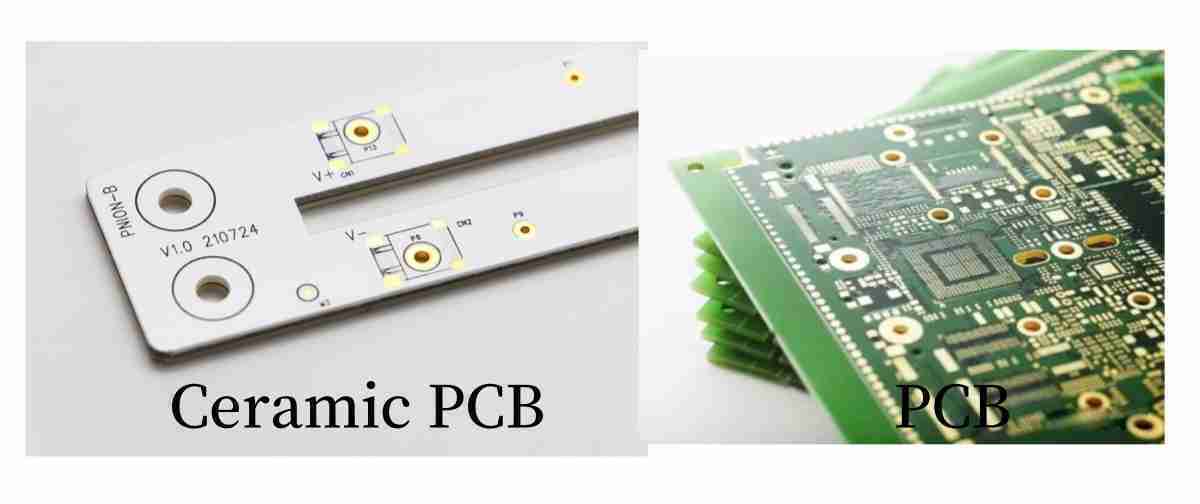Ordinary PCBs are usually made of copper foil and substrate bonded together, and the substrate materials are mostly glass fiber (FR-4), phenolic resin (FR-3), and other materials. The adhesives are usually phenolic, epoxy, and so on.
Ceramic PCBs are metal oxide ceramics such as aluminum oxide (Al2O3), beryllium oxide (BeO), and aluminum nitride (AlN). The performance of the ceramic circuit board and PCB two is quite different.
Plate rigidity
Ordinary PCBs are made of chemical fiber materials. They are restricted by environmental, temperature, processing technology, and other conditions, and their rigidity is far inferior to ceramic substrates. The latter has stronger thermal stability and a smaller thermal expansion coefficient and can be used in harsher environments.
Thermal performance
Ceramic substrates have excellent heat dissipation performance and are very suitable for high-power devices. However, Ordinary PCBs are limited by material technology and are far less outstanding than ceramic materials.
Insulation properties
The ceramic substrate has good insulation and high voltage resistance, which can effectively protect personal safety and equipment.
The bonding strength between the ceramic substrate and copper foil is strength.
The copper foil will not fall off using adhesive technology. It hugely improves the board’s reliability.
In summary, the ceramic substrate is a new PCB material with superior performance. Because of its material source, manufacturing process, and market usage, its cost is currently higher than that of ordinary PCBs.







